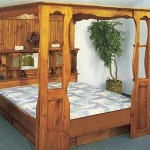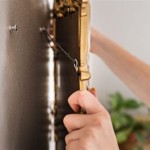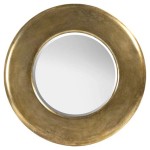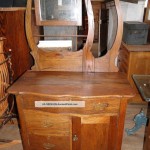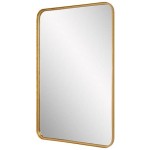How Do I Attach a Mirror to a Dresser?
Attaching a mirror to a dresser can elevate its aesthetic appeal and enhance its functionality. This seemingly simple task requires careful planning and execution to ensure stability and safety. Several methods are available, each offering different levels of security and complexity. Selecting the appropriate method depends on the size and weight of the mirror, the dresser's construction, and the desired level of permanence.
Using Mirror Mounting Clips
Mirror mounting clips offer a secure and relatively simple method for attaching a mirror to a dresser. Available in various sizes and styles, these clips typically consist of two parts: one attached to the dresser and the other to the mirror. The mirror is then placed into the clips, securing it in place. This method is especially suitable for heavier mirrors as it distributes the weight evenly across multiple points.
Before installing the clips, it is essential to measure and mark their placement accurately on both the dresser and the mirror. This ensures proper alignment and prevents the mirror from tilting. When drilling holes for the screws, using a pilot drill bit smaller than the screw diameter is recommended to prevent the wood from splitting. For dressers made of softer materials like particleboard, consider using wall anchors to provide additional support.
After securely attaching the clips to the dresser, carefully lift the mirror and position it within the clips. Some clips have a locking mechanism to ensure the mirror remains firmly in place. Always check the manufacturer’s instructions for specific installation guidelines.
Employing Adhesive Options
Adhesive options, such as construction adhesive or mirror mastic, provide an alternative method for attaching mirrors to dressers, particularly for lighter mirrors. These adhesives create a strong bond between the mirror and the dresser, eliminating the need for visible hardware. This method is often preferred for antique or delicate dressers where drilling holes could compromise the structural integrity or aesthetic value.
Surface preparation is crucial when using adhesives. Both the dresser and the back of the mirror must be clean and dry. Any dust, dirt, or grease can interfere with the adhesive's bonding capabilities. Applying masking tape along the desired edges of the mirror on the dresser helps create a clean line and prevents excess adhesive from squeezing out and marring the finish. Apply the adhesive according to the manufacturer’s instructions, ensuring even coverage. Then, carefully position the mirror onto the dresser, applying firm and even pressure for the recommended duration. Support the mirror with props or tape until the adhesive fully cures.
Utilizing a French Cleat
A French cleat offers a robust and versatile solution for hanging heavier mirrors and provides added stability. It consists of two interlocking pieces of wood, one attached to the dresser and the other to the mirror. The angled design of the cleat creates a strong connection that can support substantial weight.
Creating a French cleat involves cutting a matching 45-degree angle on two pieces of wood. One piece is attached to the back of the mirror, and the other is securely fastened to the dresser. Ensure the cleat attached to the dresser is securely mounted to wall studs or using appropriate anchors to distribute the weight effectively. Once both cleats are installed, carefully hang the mirror by engaging the two angled pieces.
Considering Safety Precautions
Regardless of the chosen method, safety should always be a primary concern. Wearing appropriate safety glasses while drilling or working with adhesives protects the eyes from dust and debris. Handling heavy mirrors requires assistance to avoid potential injuries. Ensuring the chosen fasteners and adhesives are appropriate for the weight of the mirror and the dresser's construction is essential. If unsure about the stability of the attachment, consulting a professional for guidance is always recommended.
Selecting the Right Mirror
Choosing the right mirror involves considering both aesthetic and practical factors. The mirror's size and shape should complement the dresser's proportions and the surrounding decor. The frame material should harmonize with the dresser's finish. Furthermore, assessing the mirror's weight is crucial for selecting appropriate mounting hardware and methods. For heavier mirrors, robust mounting solutions such as French cleats or heavy-duty mirror clips are recommended.
Preparing the Dresser
Before attaching the mirror, preparing the dresser's surface is crucial for a secure and lasting attachment. This involves cleaning the surface thoroughly to remove any dust, debris, or grease that could interfere with the adhesive or mounting hardware. If necessary, lightly sand the area where the mirror will be attached to create a better bonding surface, particularly for glossy finishes. Inspect the dresser for any structural weaknesses or damage that could compromise the mirror's stability. Repairing any issues before attaching the mirror is crucial.

Heavy Duty Dresser Mirror Support Brackets Made In The Usa

Fitting Dresser Mirror

How Can I Raise The Height Of Mirror On This Vintage Dresser Hometalk

Dresser Mirror Brackets September 2024 Your Guide

Mirror Supports Moheco S

American Freight How To S Attach A Mirror Dresser

American Freight How To S Attach A Mirror Dresser

How High To Hang Mirror Over Dresser Ideal Height

Dresser Mirror Idea Turn A Into Shelf Easy Diy Project

Style Your Dresser Like A Designer Showit Blog

